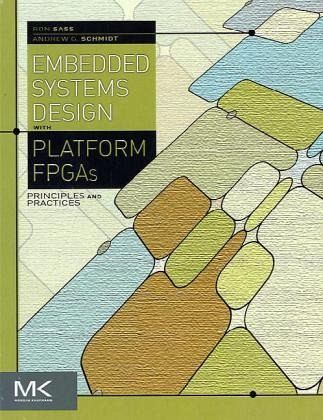
Embedded Systems Design with Platform FPGAs
Principles, Practices and Economics

PAYBACK Punkte
31 °P sammeln!
This book will familiarize professional engineers and students alike with the important emerging topic of system development using platform FPGAs. The focus is on embedded systems, but the text also serves as a general guide to building custom computing systems. The author describes the fundamental hardware, software, and a set of principles to guide the development of platform FPGA systems. A methodology is clearly and concisely presented for systematically and creatively applying these principles to construction of application-specific embedded system architectures. Each chapter has two major sections. The first part contains careful explanations of key theories. Real-world examples, bibliographic notes, and exercises support this theoretical discussion. The second part contains information on practical implementation, extended examples, and practice labs. With this book, users will gain a thorough knowledge of what a platform FPGA is, when they can best be used, and how to go about designing with them. Xilinx Platform Studio EDK and the ML-310 experimenter board are used throughout for illustration.
Embedded Systems Design with Platform FPGAs introduces professional engineers and students alike to system development using Platform FPGAs. The focus is on embedded systems but it also serves as a general guide to building custom computing systems.
The text describes the fundamental technology in terms of hardware, software, and a set of principles to guide the development of Platform FPGA systems. The goal is to show how to systematically and creatively apply these principles to the construction of application-specific embedded system architectures. There is a strong focus on using free and open source software to increase productivity. Each chapter is organized into two parts. The white pages describe concepts, principles, and general knowledge. The gray pages provide a technical rendition of the main issues of the chapter and show the concepts applied in practice. This includes step-by-step details for a specific development board and tool chain so that the reader can carry out the same steps on their own.
Rather than try to demonstrate the concepts on a broad set of tools and boards, the text uses a single set of tools (Xilinx Platform Studio, Linux, and GNU) throughout and uses a single developer board (Xilinx ML-510) for the examples.
The text describes the fundamental technology in terms of hardware, software, and a set of principles to guide the development of Platform FPGA systems. The goal is to show how to systematically and creatively apply these principles to the construction of application-specific embedded system architectures. There is a strong focus on using free and open source software to increase productivity. Each chapter is organized into two parts. The white pages describe concepts, principles, and general knowledge. The gray pages provide a technical rendition of the main issues of the chapter and show the concepts applied in practice. This includes step-by-step details for a specific development board and tool chain so that the reader can carry out the same steps on their own.
Rather than try to demonstrate the concepts on a broad set of tools and boards, the text uses a single set of tools (Xilinx Platform Studio, Linux, and GNU) throughout and uses a single developer board (Xilinx ML-510) for the examples.













